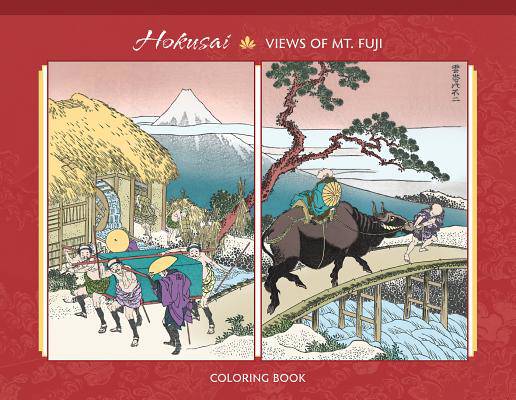
- Afhalen na 1 uur in een winkel met voorraad
- Gratis thuislevering in België vanaf € 30
- Ruim aanbod met 7 miljoen producten
- Afhalen na 1 uur in een winkel met voorraad
- Gratis thuislevering in België vanaf € 30
- Ruim aanbod met 7 miljoen producten
Zoeken
Hokusai
One Hundred Views of Mt. Fuji Coloring Book
Hardcover | Engels
€ 14,45
+ 28 punten
Omschrijving
Katsushika Hokusai remains one of Japan's most popular and influential artists. This handy volume presents the wide range of Hokusai's artistic production in terms of one of his most remarkable characteristics: his intellectual ingenuity. It explores the question of how the self-styled "Man Mad about Drawing" approached his subjects--how he depicted human bodies in motion, combined figures and landscapes, represented three-dimensional objects on two-dimensional surfaces and when he used the techniques of illusionism or adjusted reality for greater visual or emotional effect. Including some 50 stunning and unusual paintings, prints and drawings from the peerless Hokusai collection at the Museum of Fine Arts, Boston, this book is a treasure trove that introduces readers to a witty, wide-ranging and inimitably ingenious Hokusai.
Known by at least 30 other names during his lifetime, Katsushika Hokusai (1760-1849) was an ukiyo-e painter and printmaker of the Edo period. In 1800, he published his two classic collections of landscapes, Famous Sights of the Eastern Capital and Eight Views of Edo. His influence extended to his Western contemporaries in nineteenth-century Europe, including Degas, Gauguin, Klimt, Franz Marc, August Macke, Manet and van Gogh.
Known by at least 30 other names during his lifetime, Katsushika Hokusai (1760-1849) was an ukiyo-e painter and printmaker of the Edo period. In 1800, he published his two classic collections of landscapes, Famous Sights of the Eastern Capital and Eight Views of Edo. His influence extended to his Western contemporaries in nineteenth-century Europe, including Degas, Gauguin, Klimt, Franz Marc, August Macke, Manet and van Gogh.
Specificaties
Betrokkenen
- Illustrator(s):
- Uitgeverij:
Inhoud
- Aantal bladzijden:
- 56
- Taal:
- Engels
Eigenschappen
- Productcode (EAN):
- 9780764984501
- Verschijningsdatum:
- 15/01/2019
- Uitvoering:
- Hardcover
- Afmetingen:
- 216 mm x 279 mm
- Gewicht:
- 385 g

Alleen bij Standaard Boekhandel
+ 28 punten op je klantenkaart van Standaard Boekhandel
Beoordelingen
We publiceren alleen reviews die voldoen aan de voorwaarden voor reviews. Bekijk onze voorwaarden voor reviews.







